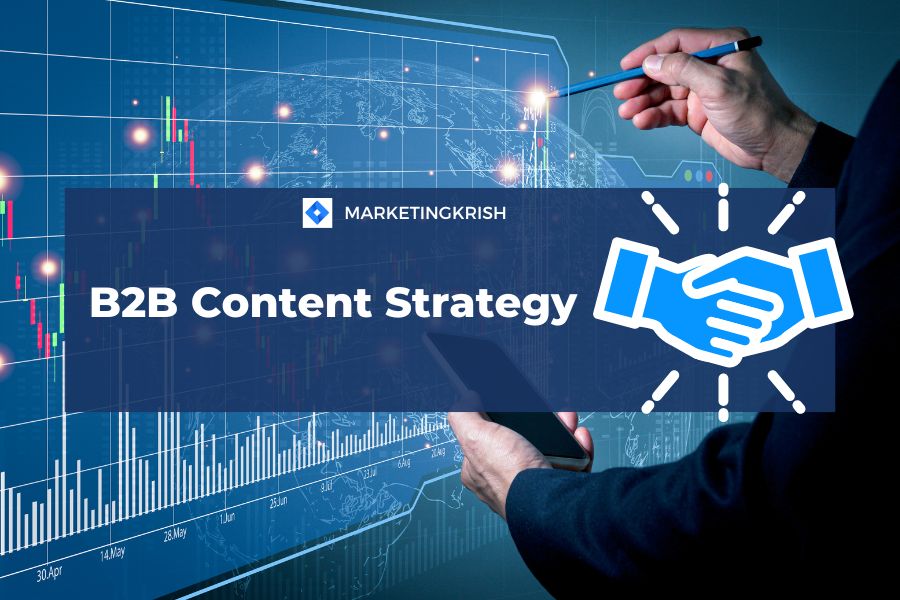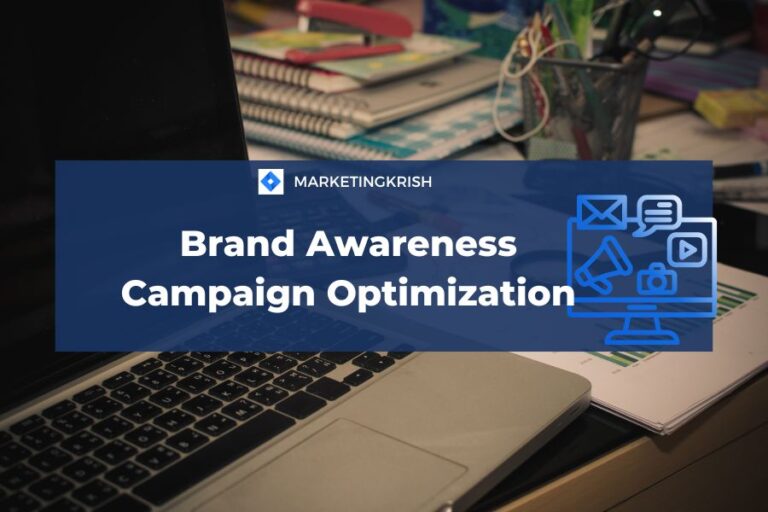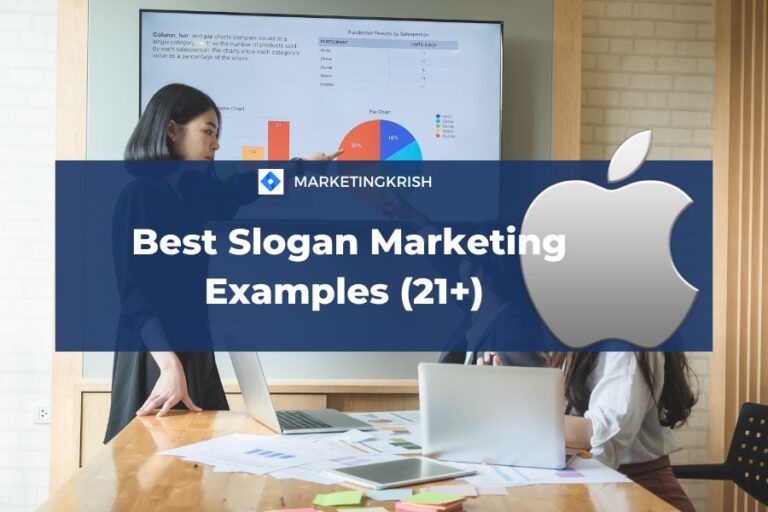B2B Content Strategy: 23+ Best Practices

Creating a successful b2b content strategy marketing can be challenging.
You need to create content that resonates with your target audience, provides value, and ultimately drives conversions
A successful content strategy B2B requires a deep understanding of the target audience, including their pain points, challenges, and goals.
By creating valuable and informative content that speaks directly to these needs, businesses can establish themselves as thought leaders and build trust with their B2B customers.
A comprehensive B2B content strategy should encompass a wide range of content types, including blog posts, white papers, case studies, videos, and social media posts, and should be aligned with overall business goals and objectives.
What is Content Strategy B2B?
Content marketing strategy in B2B (business-to-business) refers to the planning, development, and management of content that is tailored to the needs and interests of other businesses.
Effective B2B content strategy can help drive traffic, generate leads, and ultimately lead to increased revenue and growth for businesses.
Why is Content Strategy Important?
Content marketing strategy is essential for any business that wants to achieve success in today’s digital landscape.
A well-crafted content strategy provides a roadmap for creating and sharing content that interests your target audience.
This, in turn, helps build trust and credibility with your audience and can lead to increased engagement, traffic, and conversions.
23+ Best Content Strategy B2B Practices
In this blog post, we’ll explore the ultimate guide on the best content strategy tactics that work for B2B marketing.
1. Understand Your Audience
The first step to creating a successful B2B content strategy is to understand your target audience.
- Who are they?
- What are their pain points?
- What motivates them to buy?
By understanding these key factors, you can create content that speaks directly to their needs and interests.
2. Conduct Keyword Research
Keyword research is an important part of any content strategy.
By identifying the keywords and phrases that your target audience is searching for, you can create content that is more likely to be found by potential customers.
3. Develop Buyer Personas
Creating buyer personas can help you to better understand your target audience and create content that resonates with them.
These personas should include information about their demographics, job titles, pain points, and motivations.
4. Use Data to Inform Your Strategy
Data should be used to inform every aspect of your content strategy.
This includes data on website traffic, social media engagement, and conversion rates.
Use this information to refine your content strategy over time.
5. Create a Content Calendar
A content calendar is a valuable tool for planning and organizing your content.
It should include information about topics, keywords, publishing dates, and distribution channels.
6. Use a Variety of Content Formats
B2B audiences consume content in a variety of formats.
Make sure to include blog posts, whitepapers, case studies, videos, webinars, and podcasts in your content strategy.
7. Optimize Your Content for Search Engines
Optimizing your content for search engines is essential for driving traffic to your website.
Make sure to include relevant keywords in your content, as well as in the meta descriptions, titles, and headers.
8. Utilize Social Media
Social media is an important distribution channel for B2B content.
Make sure to share your content on relevant platforms like LinkedIn, Twitter, and Facebook.
9. Leverage Email Marketing
Email marketing is an effective way to nurture leads and drive conversions.
Use email campaigns to share new content, promote events, and provide exclusive offers.
10. Host Webinars
Webinars are a valuable way to connect with potential customers and provide them with valuable information. Make sure to promote your webinars through your website and social media channels.
11. Publish Case Studies
Case studies are an effective way to demonstrate the value of your products or services.
Use case studies to showcase how your solutions have helped other businesses.
12. Create How-To Guides
How-to guides are a great way to provide value to your audience and position your business as a thought leader.
Make sure to create guides that are relevant to your target audience.
13. Offer Free Trials or Demos
Offering free trials or demos is a powerful way to demonstrate the value of your products or services.
Try promoting these offers through your website and email campaigns.
14. Participate in Industry Events
Industry events are a valuable way to connect with potential customers and demonstrate your expertise. Make sure to promote your attendance on your website and social media channels.
15. Use Influencer Marketing
Influencer marketing is an effective way to reach new audiences and build trust with potential customers. Make sure to partner with influencers who are relevant to your target audience.
16. Utilize Retargeting Ads
Retargeting ads are a powerful way to stay top of mind with potential customers who have visited your website. Make sure to create retargeting campaigns that are relevant and compelling.
17. Create Infographics
Infographics are a great way to convey complex information in a visual way. Make sure to create infographics that are relevant to your target audience and promote them on social media and other distribution channels.
18. Use Guest Blogging
Guest blogging is an effective way to reach new audiences and build relationships with other businesses in your industry. Make sure to identify relevant websites and blogs and pitch them with high-quality content.
19. Conduct Original Research
Conducting original research is a powerful way to demonstrate your expertise and provide valuable insights to your audience. Use this research to create blog posts, whitepapers, and other types of content.
20. Offer Free Tools or Resources
Offering free tools or resources is a valuable way to provide value to your audience and build trust with potential customers. Make sure to promote these resources on your website and through email campaigns.
21. Create Interactive Content
Interactive content like quizzes, assessments, and calculators is a great way to engage with your audience and provide them with valuable information. Make sure to promote these resources on your website and social media channels.
22. Focus on Quality Over Quantity
While it’s important to publish content regularly, it’s even more important to focus on quality over quantity as per Google algorithm update. Make sure to create content that is valuable, informative, and engaging.
23. Measure Your Results
Measuring the results of your content strategy is essential for refining and improving it over time. Use analytics tools to track website traffic, social media engagement, and conversion rates.
Here are the FAQs on Content Strategy B2B
1. How is B2B content strategy different from B2C content strategy?
B2B content strategy is typically more focused on the needs and interests of other businesses, while B2C content strategy is geared towards individual consumers.
B2B content is often more technical and in-depth, while B2C content is more emotionally-driven and focused on the benefits of the product or service.
2. What are the key components of a successful B2B content strategy?
A successful B2B content strategy should include a deep understanding of your target audience, a clear definition of your brand/company’s voice and messaging, and a wide range of content types.
3. How do you measure the success of a B2B content strategy?
The success of a B2B content strategy can be measured through a variety of metrics, including website traffic, social media engagement, leads generation, conversion rates, and revenue growth.
By tracking these metrics over time, businesses can identify areas for improvement and make statistics-driven decisions to optimize their content strategy.
4. How often should a B2B business create new content?
The frequency of content creation will depend on the specific goals and objectives of the business, as well as the resources available for content creation.
However, it is generally recommended that businesses publish new content on a consistent basis, whether that be weekly, bi-weekly, or monthly.
The key is to maintain a steady stream of high-quality content that provides value to your target audience.
5. How can B2B businesses optimize their content for search engines?
B2B businesses can optimize their content for search engines by conducting keyword research to identify the terms and phrases that their target audience is searching for, and then incorporating those keywords into their content in a natural and strategic way.
This includes optimizing title tags, meta descriptions, and headers, as well as using internal and external links to relevant content.
6. What role does social media play in a B2B content strategy?
Social media can play a key role in a B2B content strategy by providing a platform for businesses to share their content, engage with their target audience, and build brand awareness.
By identifying the right social media channels that are most relevant to your business and sharing high-quality content on those channels.
B2B businesses can improve their online presence and reach a wider audience.
7. How important is storytelling in a B2B content strategy?
Storytelling can be a powerful tool in a B2B content strategy, as it allows businesses to connect with their target audience on an emotional level and build trust and credibility.
By using case studies, testimonials, and other forms of storytelling, B2B businesses can demonstrate the value of their products or services in a way that resonates with their audience and helps differentiate them from their competitors.
8. How can B2B businesses ensure that their content is relevant and valuable to their target audience?
By conducting market research and gathering feedback from their existing customers.
By understanding the pain points, challenges, and goals of their target audience, businesses can create content that speaks directly to their needs and provides solutions and insights that are genuinely helpful.
9. How can B2B businesses stay up-to-date with the latest trends and best practices in content marketing?
B2B businesses can stay up-to-date with the latest trends and best practices in content marketing b2b content marketing strategy by following industry thought leaders, attending conferences and events, and participating in online communities and forums.
They can also conduct their own research and experiments to test new strategies and tactics and stay ahead of the curve.
Conclusion
By implementing these content strategy tactics, you can create a B2B content strategy that resonates with your target audience, provides value, and drives conversions.
Remember to always focus on quality over quantity, and use data to inform your strategy.
Hope you got some value from this content!






Usually I do not read article on blogs however I would like to say that this writeup very compelled me to take a look at and do it Your writing style has been amazed me Thank you very nice article
my pleasure, hope you liked it